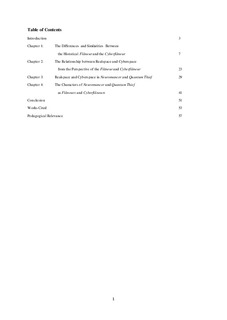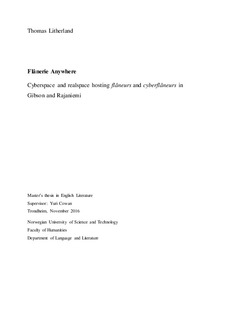| dc.description.abstract | The cyberflâneur has been associated with the internet we know and use, and his presence in cyberspace has been considered by some as the distinguishing factor between him the original flâneur. However, this dissertation argues that neither the cyberflâneur nor the flâneur can be defined by their location. In terms of flânerie, cyberspaces are potentially indistinguishable from their physical counterparts, realspaces. Both spaces are navigational and more or less representational. A comparison of the two flâneurs shows that the original flâneur seeks to decipher crowds as first-hand information while a cyberflâneur seeks to decipher processed information. In other words, the cyberflâneur indulges in flânerie of a representation. William Gibson’s Neuromancer and Hannu Rajaniemi’s Quantum Thief provide examples of fictional cyberspaces and realspaces that are almost indistinguishable in that both spaces provide both first-hand information and representations. Furthermore, the characters in these novels indulge in flânerie and cyberflânerie regardless of whether or not they are in cyberspace. | nb_NO |

